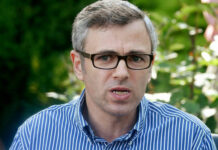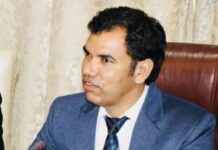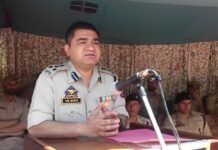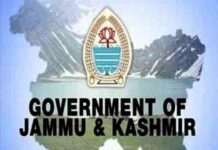SRINAGAR: Since the Covid-19 causing is still having the field day, it obviously indicates that the humanity will have to learn how to live with the known unknown, a sub-microscopic RNA strand that has brought the world on its knees. It has already changed the world and there is an expectation that many more changes will follow in the coming days. The virus is dictating a new protocol of life.
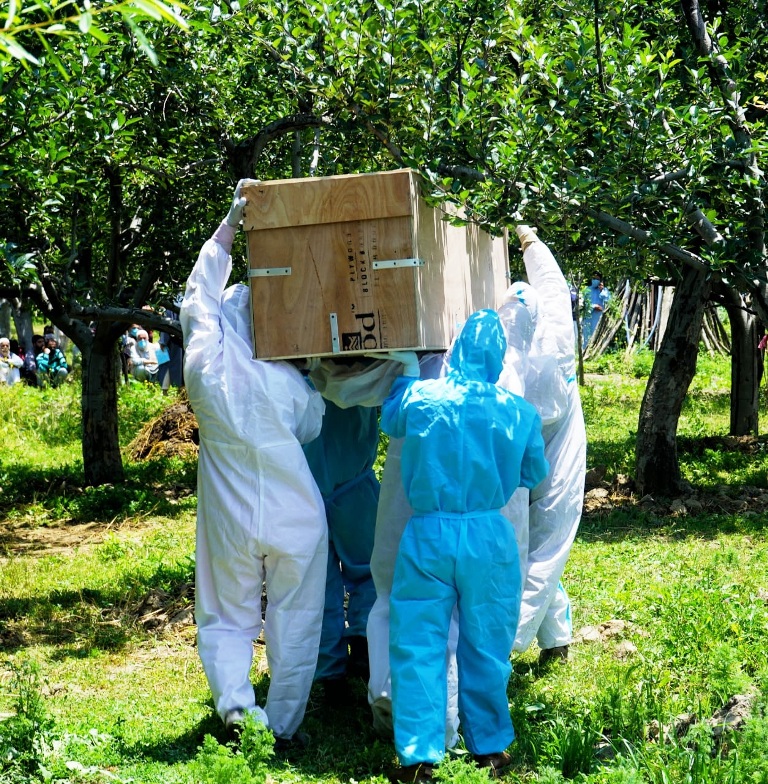
One of the major institutions that have already been changed is the institution of funerals. In every society, it has remained an elaborate affair. A death by Covid-19 changes the family first. One officer who managed a quarantined belt said his most painful exercise was to take the family members of a Covid-19 case to the quarantine facility well before they could perform the last rites of the member.
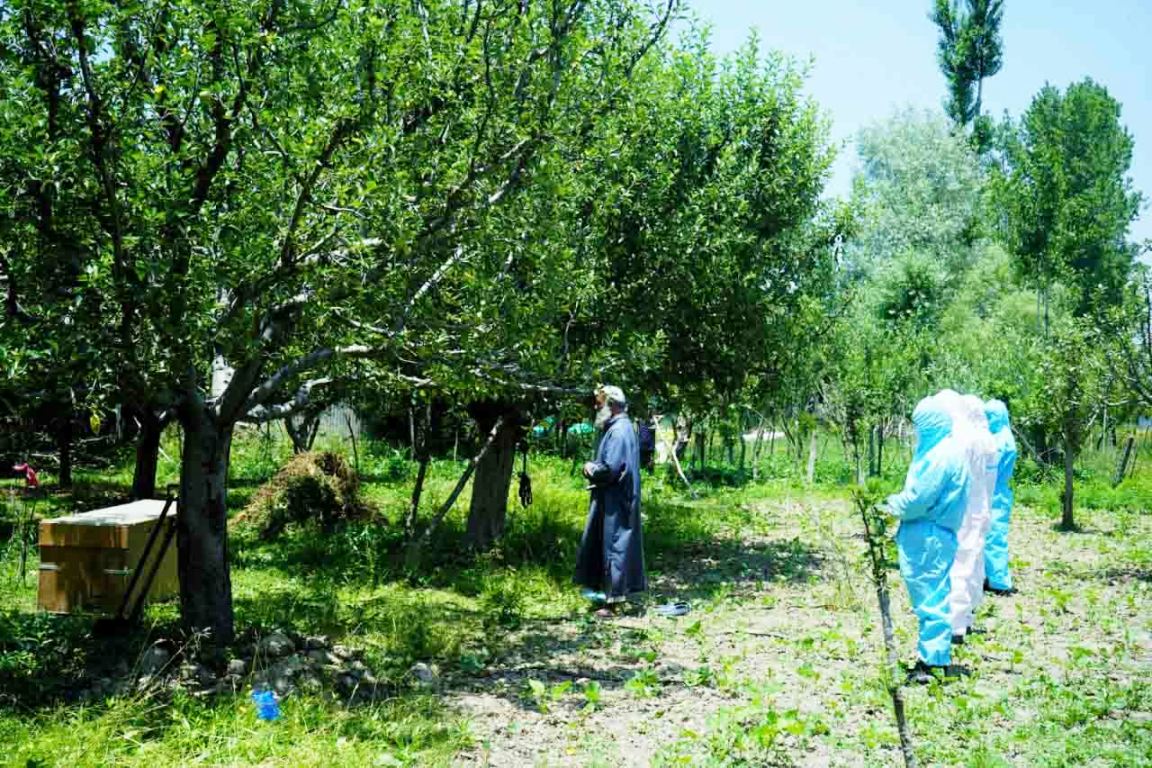
That is how it has always been in Covid-19. Kashmir Life’s photographers led by Bilal Bahadur have been taking very calculated risks in documenting the burials of the Covid-19 cases. Jammu and Kashmir has so far recorded 50 deaths including one of the CRPF man and a West Bengal tailor (and five in Jammu) who was operating from Srinagar for many years.
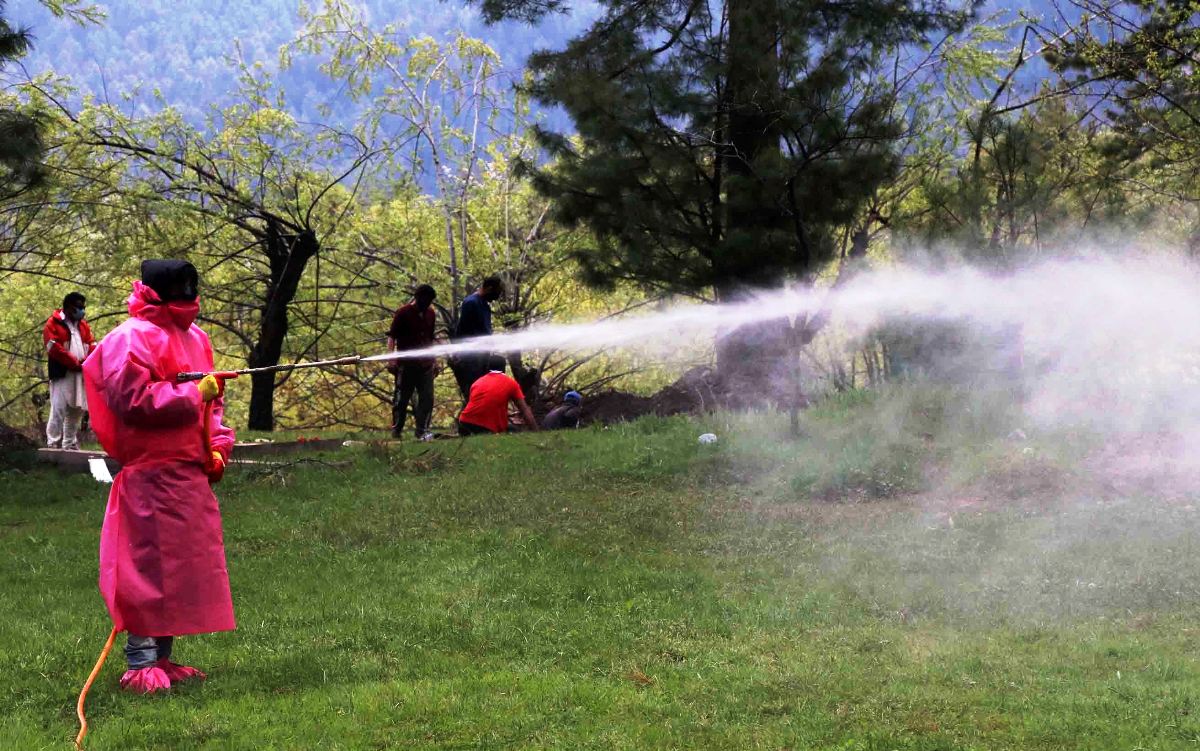
The moment a death by Covid-19 is declared, the dead body becomes part of the official property till it is laid to rest as per the standard operations procedure, set by the World Health Organisation (WHO). Funerals are supposed to be very low key affairs and not many people are allowed to join. Those who are joining will have to ensure they have adequate personal protection gear, something that they will discord and safely destroy after the funeral is over.
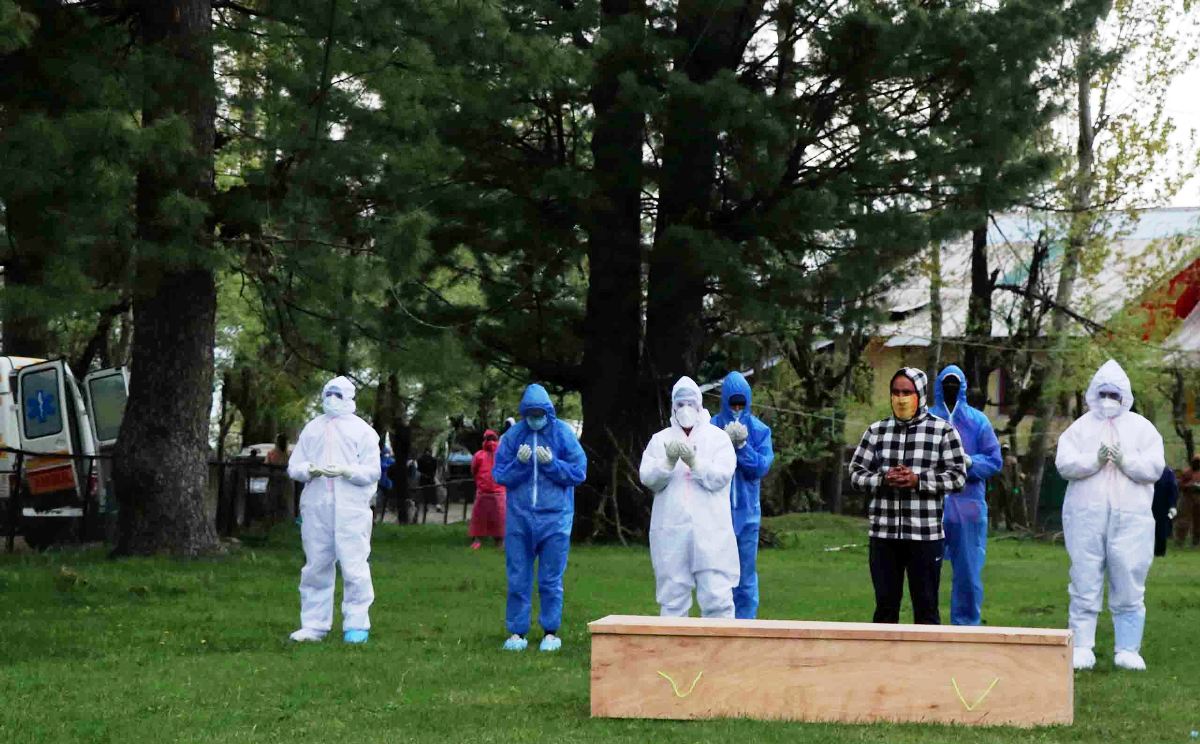
In most of the cases, the body is sealed in a coffin from the hospital itself and the body is being buried along with the casket.
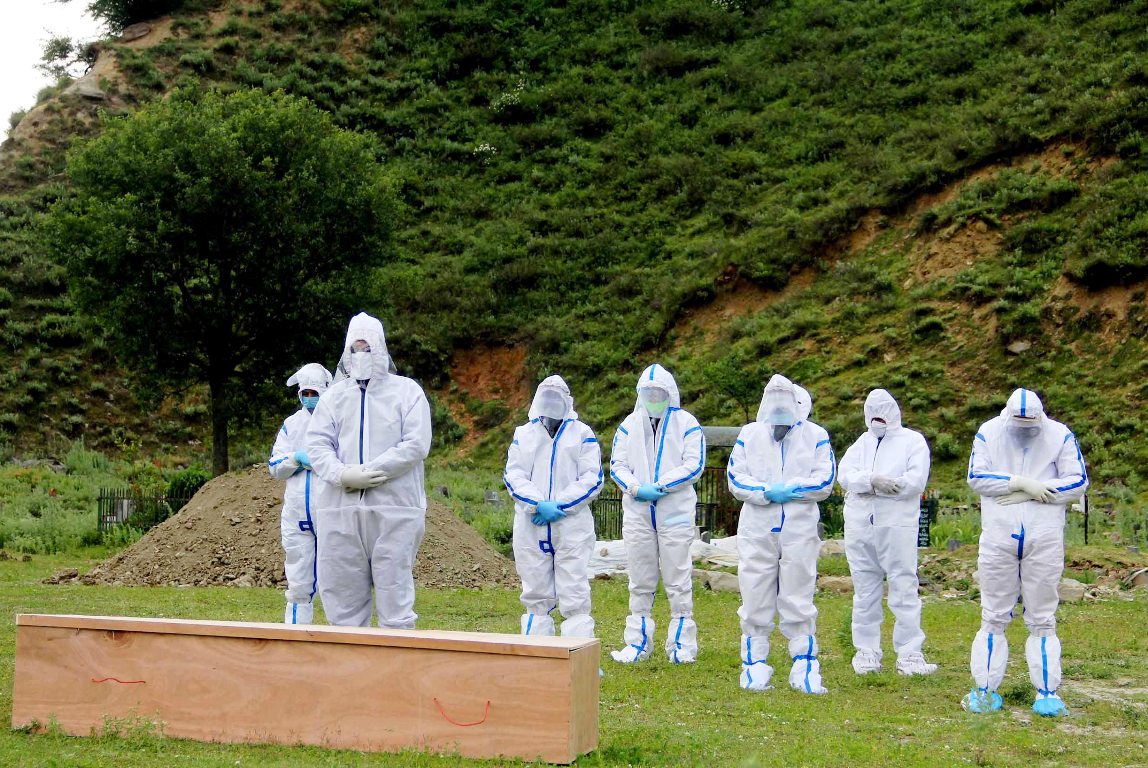
In Srinagar, where the burial is a commercial exercise, not many professionals are coming forward to do the last rites because it does not involve the transaction of money. This has led a young man from Chattabal to volunteer for the exercise. He has laid to rest many such people so far.
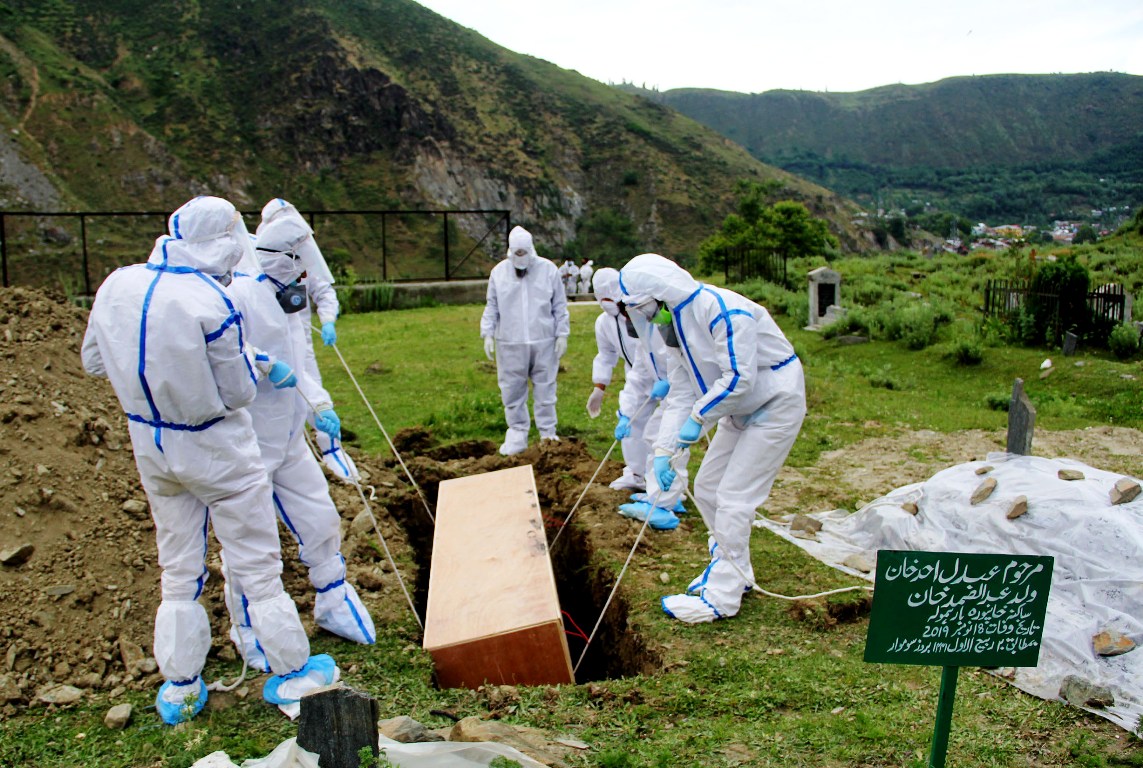
This photo essay comprises some of the select clicks of these frontline workers from the media. They have watched the officials using disinfectants in the graveyards and in certain cases in the grave too. They have seen how the bulldozers were used in making of the graves. They have witnessed how in certain cases, the Covid-19 casualties were laid to rest in secluded places, sometimes in apple orchards, far away from the ancestral graveyards of the victims.
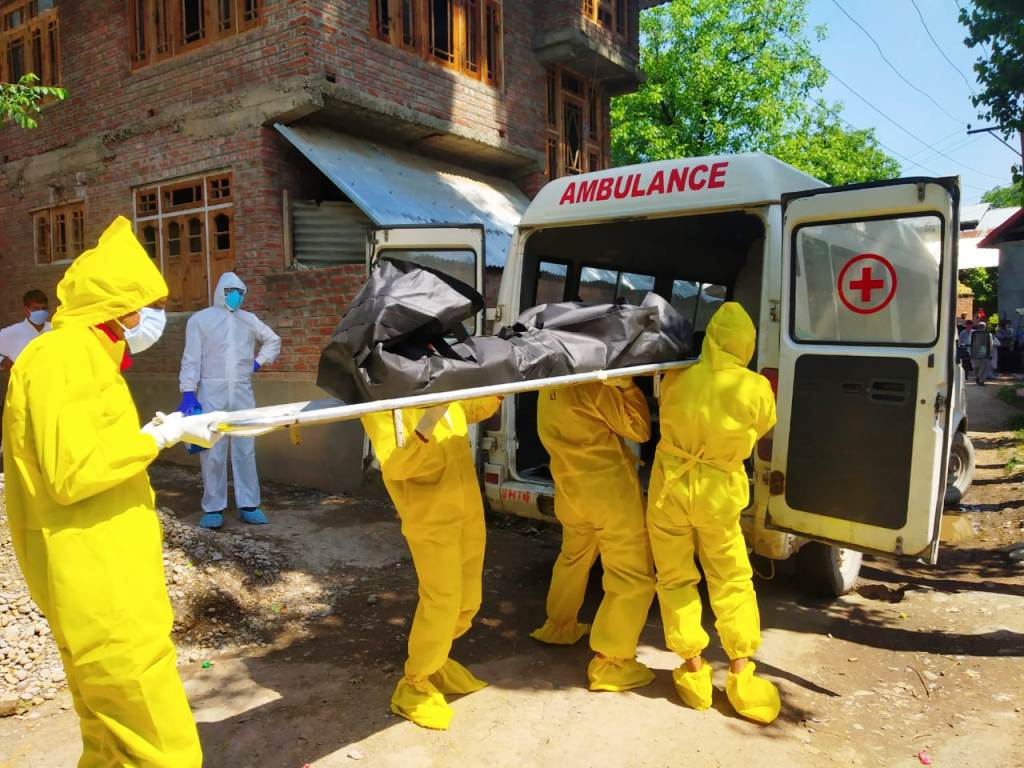
In certain cases, the funerals have triggered controversies also. One case was reported from Sopore initially. Later, another similar controversy was reported from a Srinagar locality where the family was in quarantine and the burial was managed by the police.
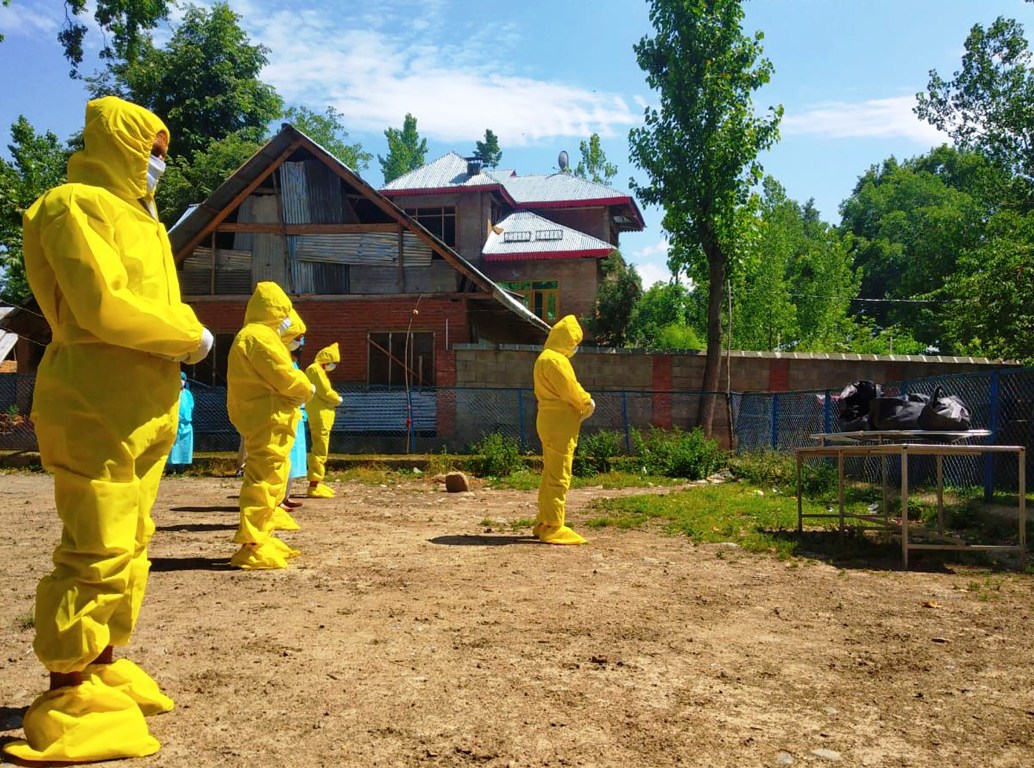
Yet another controversy was reported by Mohammad Afaq Sayeed, a member of the Covid Watch J&K, a social media group dedicated to the issues and problems related to the pandemic. Here is reproduced the detailed post, he post on Facebook last night:
“Yesterday, a non – resident COVID positive patient expired in a Srinagar hospital due to brain haemorrhage. Deceased, as we were told was putting up in an uptown Srinagar locality for many years. When his locality members were contacted by the hospital staff for managing his burial in the local community burial ground, it is alleged that community members out rightly rejected to bury the deceased in their local graveyard. Subsequently, a Facebook post by one of the senior Doctors was published with an appeal for local Social Work Organisations, to facilitate the burial of the deceased. A Local Social Work Organisation took the initiative and agreed to bury the deceased at a graveyard, land for which was purchased by the Organisation a few years back. The Hospital administration was informed about the Organisation’s intent and was accordingly requested to transport the corpse in an ambulance accompanied by some hospital officials.
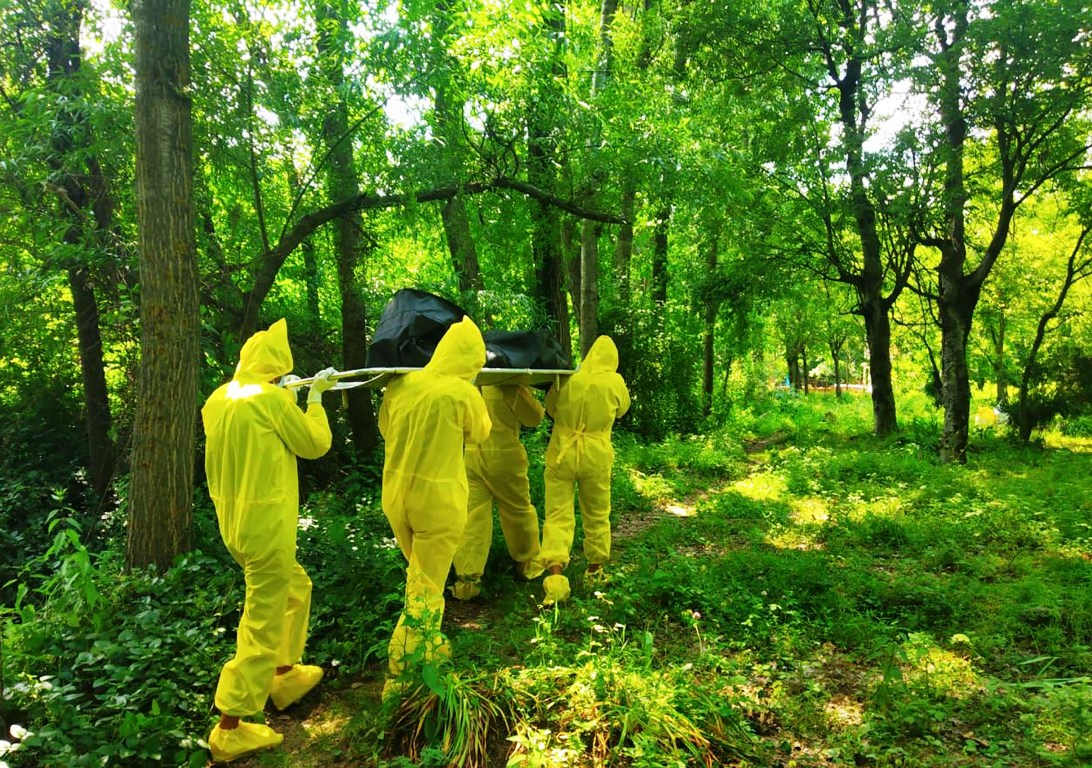
In the meanwhile, digging work of the grave was undertaken by some of the senior members of the Organisation themselves under proper COVID procedural guidelines. The grave was ready by 8 PM and the coffin reached the burial ground at around 10 PM. The corpse was accompanied by some people who were perhaps friends and colleagues of the deceased.
Volunteers tried to down the corpse into the grave immediately but could not do it due to some issues with the wooden coffin. As volunteers were on the job, residents came to the graveyard site and created a raucous. They were wary of COVID deceased getting buried in their immediate locality. Volunteers had to face a tough time in convincing them to allow the burial. At one point, it boiled down to the residents getting physical with a team of volunteers. But Alhamdullilah, good sense prevailed and the deceased was accorded the burial as per the traditions of our faith. We cannot, however, claim that the burial was decent. Had residents not intervened with their objections, volunteers instead of reaching their respective homes at 2 AM, would have been home by 12 in the night.
Keeping the happenings of yesterday in view, we wish to ask:
- A) Are those who die due to COVID untouchables?
- B) If as per our faith, anyone who dies due to the pandemic is considered as ‘Shaheed’, why do some people see these ‘Suhada’ with disdain? Doesn’t this smack of our ignorance of Deen?
- C) Why isn’t there any arrangement for the burial of non-local COVID deceased Muslims anywhere in our city? Is it not the responsibility of the administration to facilitate the same at some designated place, with all the resources at its disposal.?
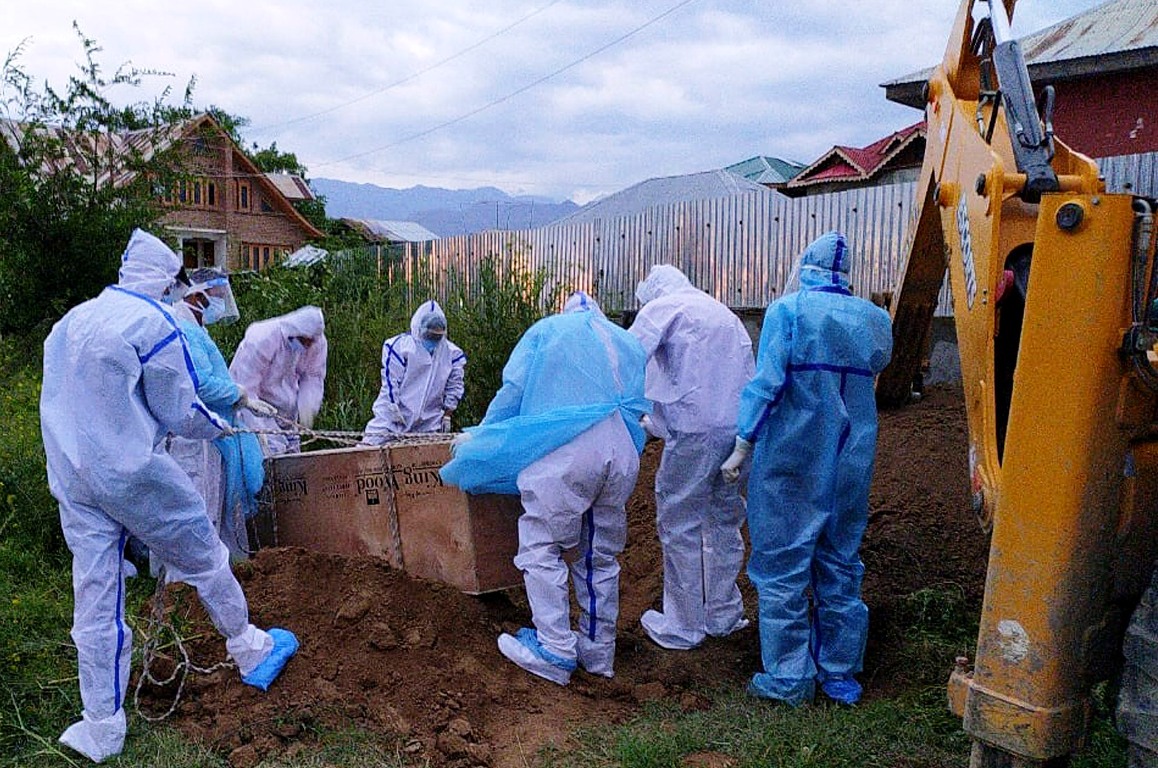
We have some suggestions as well:
- Ulema should come forward, use their authority, and tell people in no ambiguous terms, how sinful is it to disrupt “Tatfeem” of any deceased Muslim.
- Doctors and civil society members should also educate people. Let people know that dead people can’t be the carriers of COVID. A dead person is harmless.
- The administration should pull up its socks and be prepared for the emerging situation. NGOs should be encouraged, facilitated, and assisted in doing their work.
- People instead of putting hurdles in the burial process should help. Who knows who will go into the grave as a result of COVID next? Let this reality dawn upon us all. Don’t we always recite, “Kulun Nafsi Zaikatul Maut”?
- Giving respect to the dead is not something that has to be taught, it comes naturally.
Lastly, we request you to pray for those who are ill. Pray for all of us as well.”
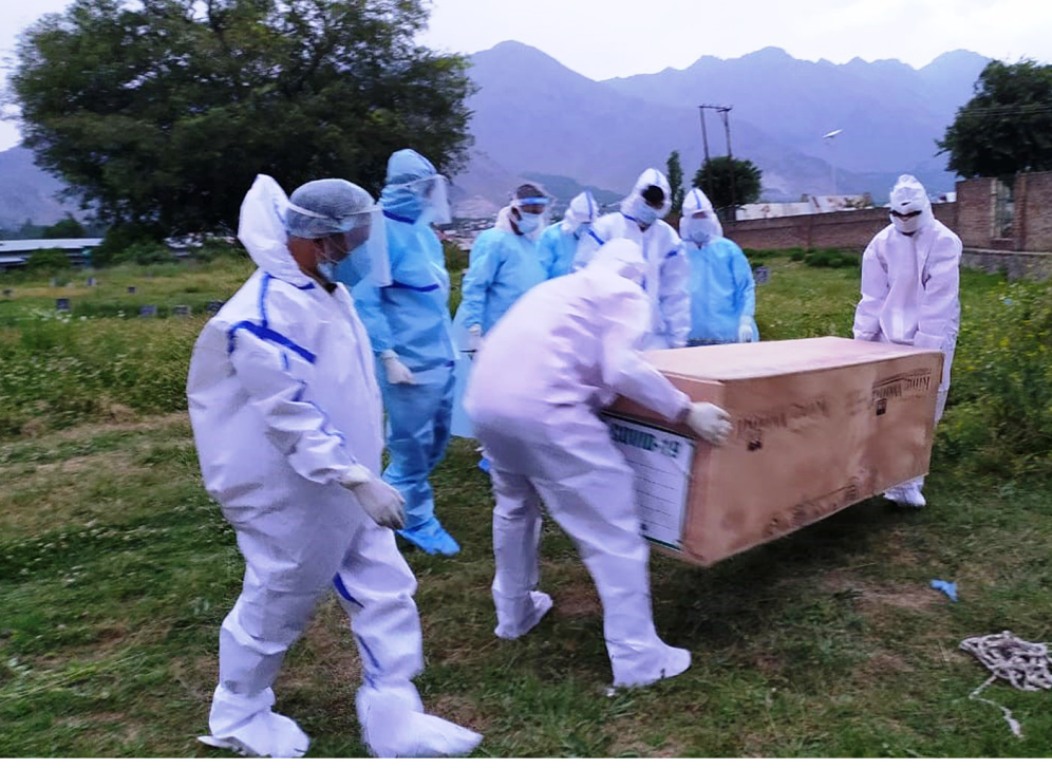
Right now in the rush, Kashmir is doing whatever it can do in managing the Covid-19 victims. The society generally has forgotten that they are victims of the disease and not the disease. They deserve dignity in death. Controversies over the deaths are manifestations of the lack of knowledge. People better know that societies are not evaluated on the basis of how they are managing the living ones but also how they treat their dead.



